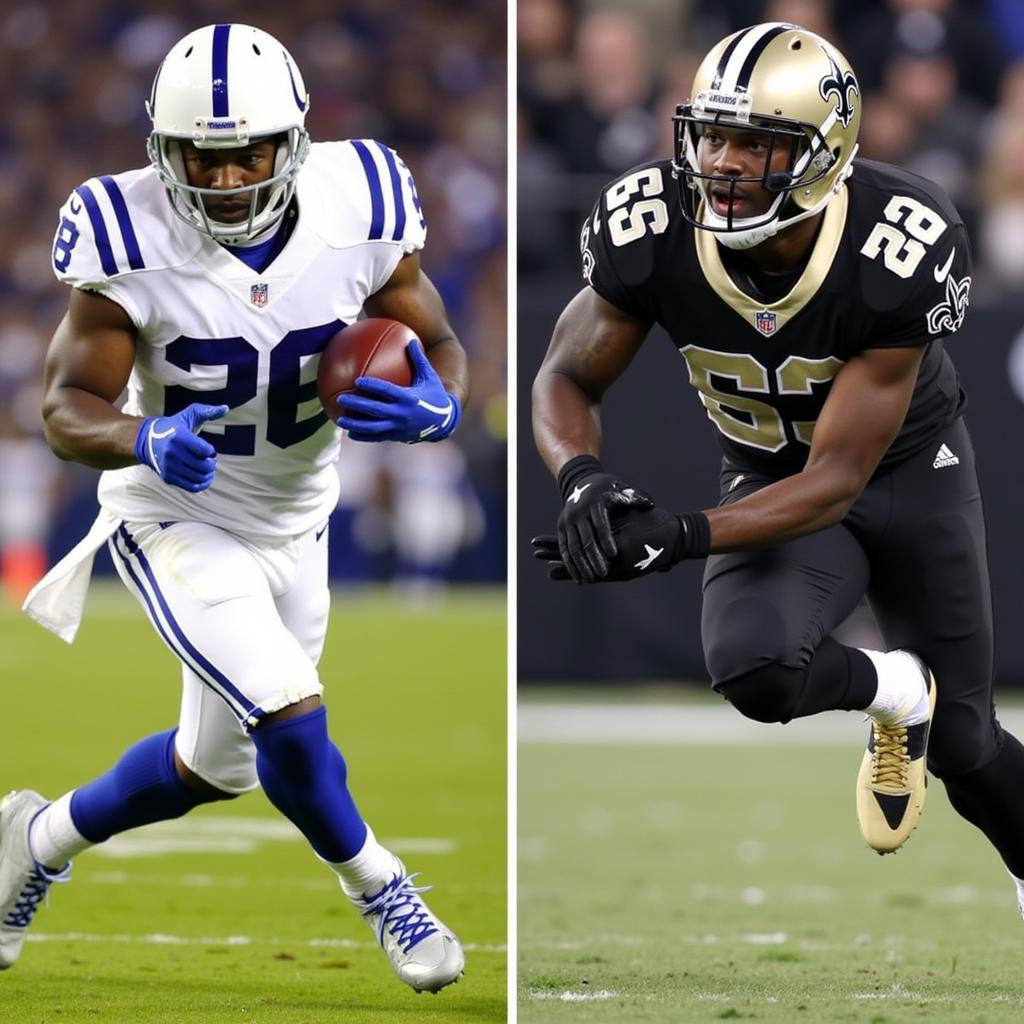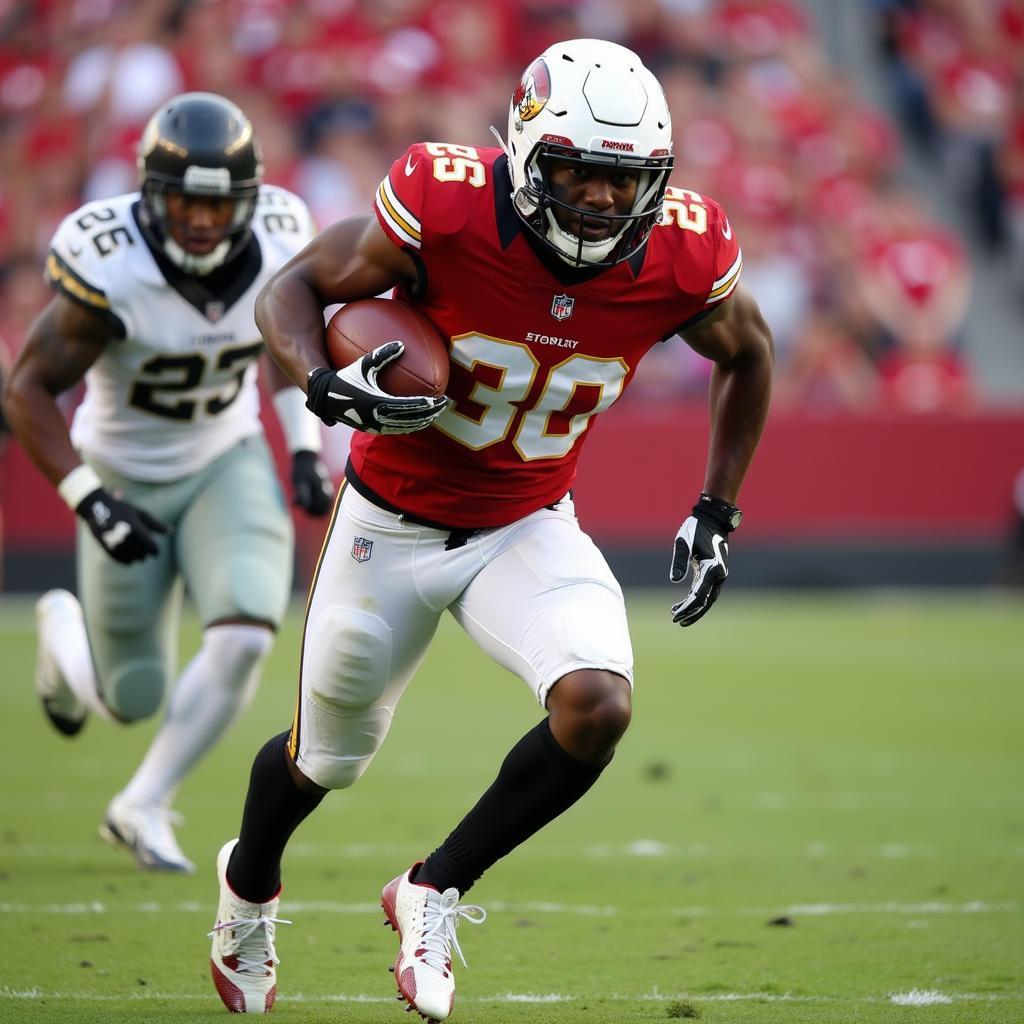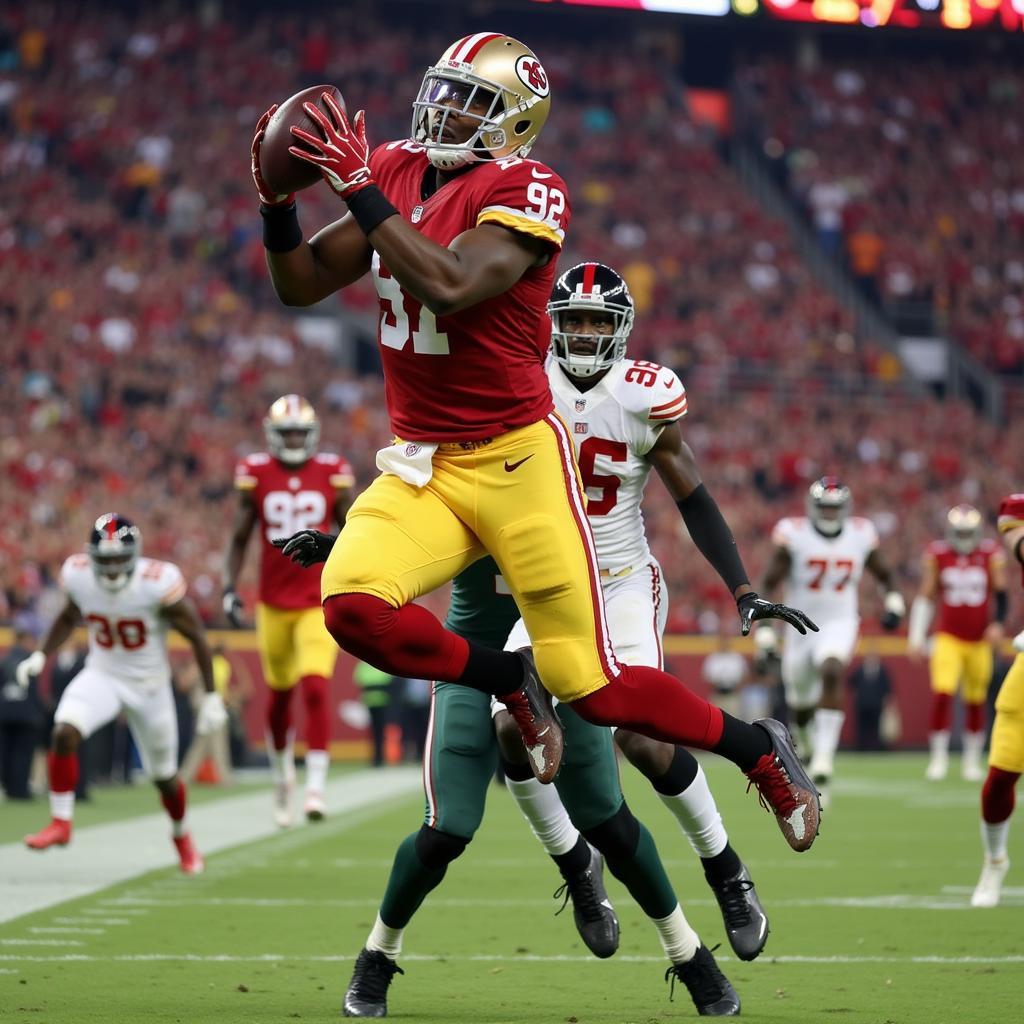Michael Pittman or Chris Olave: Which Wide Receiver Should You Draft?
October 10, 2024Choosing the right wide receiver can make or break your fantasy football season. Two names consistently popping up in draft discussions are Michael Pittman Jr. of the Indianapolis Colts and Chris Olave of the New Orleans Saints. Both players offer enticing skill sets and potential for fantasy dominance, leaving many wondering: who’s the better pick? Let’s dive into a comprehensive comparison of Michael Pittman and Chris Olave, examining their strengths, weaknesses, and potential to help you make the best decision for your fantasy team.
 Michael Pittman Jr. and Chris Olave on the field
Michael Pittman Jr. and Chris Olave on the field
Skill Set Showdown: Breaking Down Their Games
While both Pittman and Olave possess the talent to be top receivers in the NFL, they win in different ways.
Michael Pittman Jr.: The Physical Possession Receiver
Standing tall at 6’4″ and weighing 223 lbs, Pittman is a force to be reckoned with on the field.
- Strengths: Pittman excels at contested catches, using his size and strength to box out defenders and win in traffic. He’s a reliable target, particularly in the red zone, where his size makes him a nightmare for opposing defenses.
- Weaknesses: Pittman isn’t known for his blazing speed or elite route-running, relying more on his physicality and strong hands.
Chris Olave: The Speedster with Smooth Routes
Olave, on the other hand, is a sleek and speedy receiver who can take the top off a defense.
- Strengths: Olave possesses elite speed and acceleration, making him a constant deep threat. His route-running is already considered advanced for a young player, allowing him to create separation and find open space.
- Weaknesses: Olave, while not small, doesn’t have Pittman’s size advantage. He might not be as dominant in contested catch situations, and his slighter frame might raise questions about his durability over a long season.
 Chris Olave running a deep route
Chris Olave running a deep route
Quarterback Concerns: A Tale of Two Offenses
A crucial factor in evaluating wide receivers is the quarterback throwing them the ball.
Indianapolis Colts: The Colts are entering the 2023 season with rookie quarterback Anthony Richardson at the helm. Richardson, while brimming with potential, is an unknown commodity. His development and ability to acclimate to the NFL game will directly impact Pittman’s production.
New Orleans Saints: The Saints welcome back veteran Derek Carr. Carr represents a significant upgrade over the Saints’ quarterback play last season. His experience and accuracy should benefit Olave, providing him with consistent and reliable targets.
Fantasy Outlook: Projecting Their 2023 Season
Both Pittman and Olave have the potential to put up big numbers in fantasy football.
Michael Pittman Jr.: Pittman’s fantasy value hinges on Richardson’s development. If Richardson can deliver accurate passes, Pittman’s role as the Colts’ clear number one target guarantees him a high volume of targets. However, with a rookie quarterback, there’s a risk of inconsistency and growing pains.
Chris Olave: Olave enters the season as Carr’s likely top target. With a proven quarterback throwing him the ball, Olave’s ceiling is incredibly high. He has the potential to emerge as a top-10 fantasy wide receiver, especially in point-per-reception (PPR) leagues where his route-running prowess will be rewarded.
 Michael Pittman Jr. making a touchdown catch
Michael Pittman Jr. making a touchdown catch
The Verdict: Who Should You Draft?
The decision between Pittman and Olave comes down to your risk tolerance and draft position.
If you’re drafting for upside and believe in Carr’s ability to elevate the Saints’ offense, Olave is the pick. His ceiling is higher, and his situation is more stable with a veteran quarterback.
If you prefer a safer floor and are comfortable with the risk associated with a rookie quarterback, Pittman is a solid choice. His target share is secure, and if Richardson develops as hoped, Pittman could outperform his draft position.
Ultimately, both Michael Pittman Jr. and Chris Olave are talented wide receivers with the potential to be fantasy stars. Consider your league settings, draft position, and risk tolerance when making your selection.